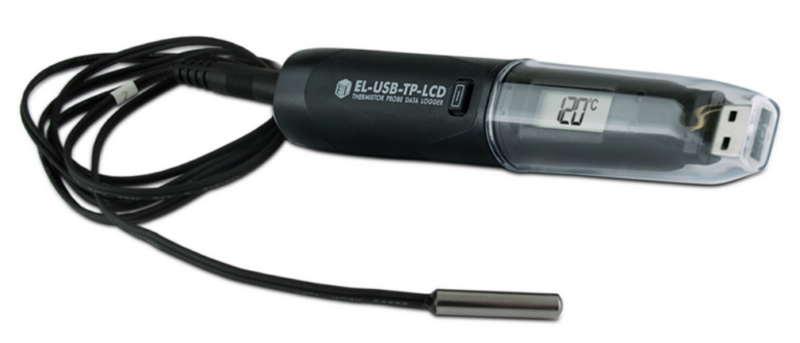What Does a Thermistor Do?
What Is A Thermistor And What Does It Do?
The effectiveness of temperature control can significantly impact the outcome of an application. Central to this precision are thermistors. But, what exactly does a thermistor do, and how does it work?
Thermistors are devices that provide a consistent, predictable, and precise change in electrical resistance in response to temperature variations. Utilised in a vast array of applications, from industrial environments to everyday cooking, thermistors are indispensable for determining, regulating, and monitoring temperature.
Their reliability and versatility make them crucial components in systems such as HVAC, automotive, medical devices, and household appliances.
At Process Parameters, a leading UK-based sensor manufacturer and temperature sensor supplier, we understand the vital role thermistors play.
In this blog, we unravel the mystery of thermistors, exploring what they do and how they work.
What Does a Thermistor Do?
Accurate temperature monitoring is essential in many manufacturing processes, as the effectiveness of temperature control can significantly impact the outcome of an application.
Thermistors are pivotal in achieving this accuracy by providing a consistent, predictable, and precise change in electrical resistance in response to temperature variations.
Thermistors are utilised wherever temperature measurement is needed, ranging from industrial environments to everyday cooking. They are indispensable for determining, regulating, and monitoring temperature.
A common application of thermistors is in HVAC systems, where they play a crucial role in managing thermal control and airflow.
Related: What is a thermistor?

How Thermistors Work
A thermistor, derived from “thermal resistor,” is a temperature-sensitive component that significantly changes its resistance in response to temperature variations. Unlike standard resistors that maintain a constant resistance, thermistors are specifically engineered to indicate dramatic fluctuations in resistance as temperatures shift.
NTC Thermistors (Negative Temperature Coefficient)
Negative Temperature Coefficient (NTC) thermistors exhibit a sharp decrease in resistance as temperature rises. This makes them ideal for precise temperature measurements. NTC thermistors are commonly used in temperature sensors in electronic devices, temperature compensation in circuits, and thermal protection in power supplies.
PTC Thermistors (Positive Temperature Coefficient)
Positive Temperature Coefficient (PTC) thermistors, on the other hand, experience an increase in resistance as temperature increases. This characteristic makes PTC thermistors suitable for applications such as overcurrent protection and temperature regulation.
Common uses include overcurrent protection in electrical circuits, temperature regulation in heating elements, and motor protection in appliances.
Applications of Thermistors
Thermistors have found their way into a wide range of applications across different industries:
Thermistors in Household Appliances
Thermistors are used to control and monitor temperatures in various household appliances, ensuring safety and efficiency.
Thermistors in Automotive Systems
In automobiles, thermistors help regulate engine temperature and monitor other critical systems, enhancing performance and safety.
Thermistors in Medical Devices
Medical devices often rely on thermistors for accurate patient temperature monitoring, playing a crucial role in patient care.
Thermistors in Industrial Equipment
Industrial processes and HVAC systems use thermistors for precise temperature control, contributing to operational efficiency and safety.
At Process Parameters, we supply data loggers with thermistor probes. View some of our thermistor data logger products here or contact us if you’re not sure which device is best for your application.
View Thermistors
Advantages of Using Thermistors
Thermistors offer several advantages, making them a preferred choice in many industrial applications:
- High Sensitivity to Temperature Changes: Thermistors can detect small temperature variations, providing precise measurements.
- Accuracy and Precision: They deliver accurate temperature readings, essential for critical applications.
- Cost-Effectiveness: Thermistors are generally more affordable compared to other temperature sensors.
- Fast Response Time: They quickly respond to temperature changes, which is crucial for many dynamic applications.
Thermistors vs. Other Temperature Sensors
When choosing a temperature sensor, it’s important to consider the specific requirements of your application. Here’s a comparison between thermistors and other common temperature sensors:
Comparison with RTDs (Resistance Temperature Detectors)
RTDs offer high accuracy and stability over a wide temperature range, but they are generally more expensive than thermistors.
Comparison with Thermocouples
Thermocouples can measure a broader temperature range but are less accurate and have a slower response time compared to thermistors.
Comparison with Semiconductor Temperature Sensors
Semiconductor sensors are suitable for integrated circuit applications but may not match the precision of thermistors in certain scenarios.
Selecting the Right Thermistor
Choosing the right thermistor involves considering factors such as temperature range, accuracy requirements, and response time.
We take pride in being a trusted temperature sensor supplier at Process Parameters, providing a wealth of experience and industry-leading products to find you the right setup for your application.
Consult with our dedicated team to ensure you select the best thermistor for your needs.
Get in Touch
Installation and Maintenance of Thermistors
Proper installation and maintenance are crucial for the optimal performance of thermistors. Here are some best practices:
- Installation: Ensure proper placement and secure connections to avoid errors in temperature readings.
- Maintenance: Regularly check for any signs of wear or damage and replace thermistors as needed to maintain accuracy.
Conclusion
Thermistors play a vital role in numerous applications due to their high sensitivity, accuracy, cost-effectiveness, and fast response time.
Whether it’s ensuring safety in household appliances, enhancing performance in automotive systems, or providing precise temperature control in industrial processes, thermistors are a preferred choice in temperature sensing technology.
At Process Parameters, we pride ourselves on offering industry-leading thermistor products and expert guidance to help you select the best device for your specific needs.
Proper installation and maintenance further ensure that these critical components deliver optimal performance, maintaining the accuracy and reliability essential for many applications.
For expert guidance and high-quality thermistor products, contact our team today. Complete our online enquiry form, email sales@processparameters.co.uk or call 01628 778788.
Get in TouchFAQs About Thermistors
What does a thermistor do to a circuit?
A thermistor influences a circuit by altering its resistance in response to temperature changes. This variation in resistance can be used to control or measure temperature, acting as a temperature sensor. In practical applications, thermistors can help protect circuits from overheating, regulate temperature-sensitive processes, or provide precise temperature readings to the system.
How does a thermistor react to temperature?
A thermistor reacts to temperature by changing its electrical resistance. For Negative Temperature Coefficient (NTC) thermistors, resistance decreases as temperature increases. Conversely, for Positive Temperature Coefficient (PTC) thermistors, resistance increases as temperature rises. This predictable change in resistance allows thermistors to be used effectively in temperature sensing and control applications.
Why are thermistors used in fridges?
Thermistors are used in fridges to monitor and regulate the internal temperature. By providing accurate and responsive temperature readings, thermistors help ensure the fridge maintains a consistent temperature, which is crucial for preserving food quality and safety. They enable the fridge’s control system to adjust cooling mechanisms promptly, enhancing energy efficiency and performance.
Why are thermistors used in ovens?
Thermistors are employed in ovens to ensure precise temperature control and stability. Accurate temperature monitoring is critical for achieving consistent cooking results. Thermistors provide real-time temperature feedback to the oven’s control system, allowing for precise adjustments to heating elements. This ensures that the oven operates within the desired temperature range, enhancing cooking performance and safety.
Related Guides:
- What is a Thermistor? How Do They Work?
- What is a Temperature Sensor?
- Thermistors vs Thermocouples: Choosing the Right Sensor

